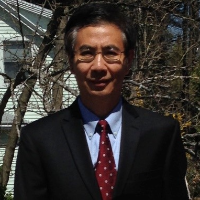Green Chemistry 2025

Synertide Pharmaceuticals, Inc, USA
Abstract:
The pharmaceutical industry is a major contributor to waste, primarily from the disposal of hazardous solvents, which pose risks to both human health and the environment. The adoption of eco-friendly alternatives, such as green and bio-based sustainable solvents, can mitigate these risks and protect the environment. However, the current process of identifying optimal solvent replacements involves time-consuming tests and additional costs. Our research project aims to tackle this challenge by developing an innovative AI-driven model. This model predicts optimal substitutions for hazardous solvents, facilitating the transition from conventional, harmful solvents to green alternatives in pharmaceutical research and manufacturing processes. To achieve this goal, we compiled a collective database of over 120 solvents, including their individual physicochemical properties. Utilizing the machine learning algorithms, OPTICS/DBSCAN, we conducted a comprehensive six-dimensional analysis of all solvents. This led to the identification of Kamlet–Taft solvatochromic parameters and Hanson solubility parameters as the most relevant quantitative measures for comparing solvent similarities, correlating with solubility, reaction rate and equilibrium. After further iterations and analysis, we created a software algorithm capable of generating the top 10 most similar green and bio-based sustainable solvents for traditionally used hazardous solvents. Validation of our selection results was achieved by matching with examples from scientific literature. To make this information widely accessible, we developed a user-friendly cloud-based interface, which has been provided to the public free of charge. This prediction tool could help chemists and pharmaceutical companies to minimize the usage of hazardous solvents.
Biography:
Zhaolin Wang received his PhD
in organic chemistry from University of Utah and postdoctoral studies from Harvard
Medical School. He is the founder of Synertide Pharmaceuticals, an early-stage
drug discovery company. He has published more than 12 papers in reputed
journals.
